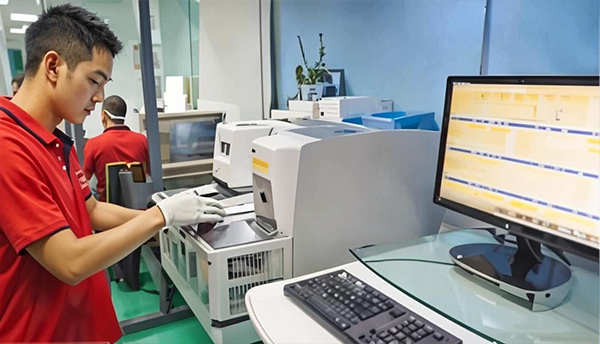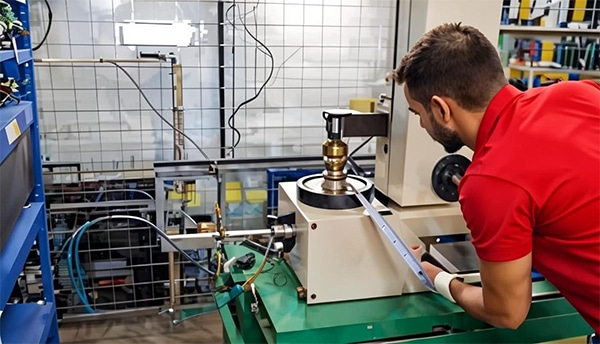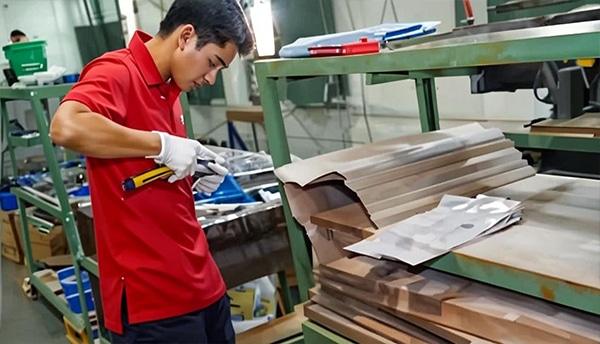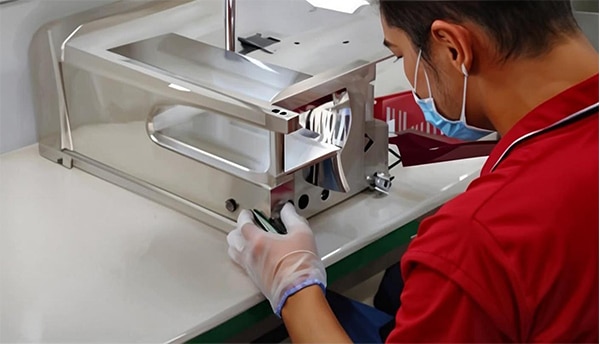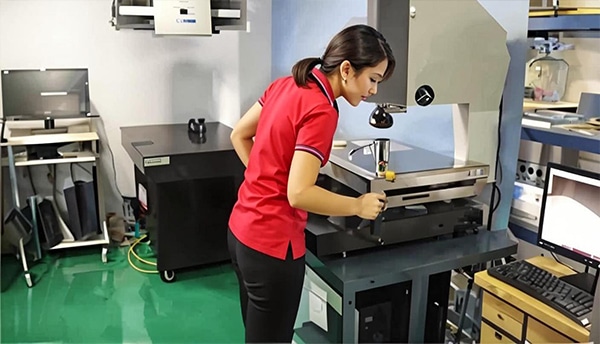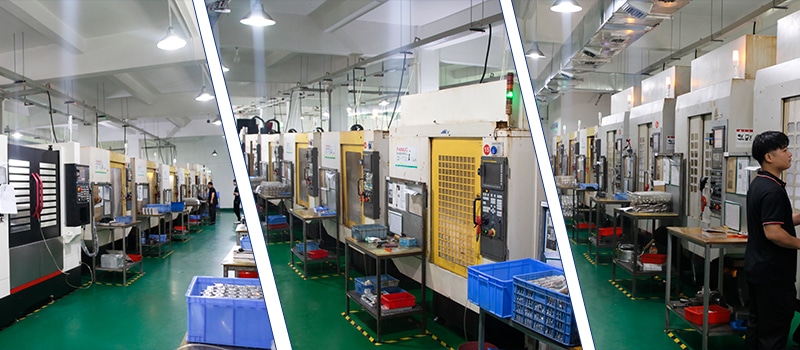Description
Introduction to CNC Machining
CNC machining, or Computer Numerical Control machining, is a pivotal technology in modern manufacturing. At its core, this process involves the use of computers to control machine tools, enabling the precise fabrication of various components. By programming a computer with a specific set of instructions, manufacturers can dictate the operations of mills, lathes, routers, and other machinery with remarkable accuracy. This method transforms a digital design into solid objects, ensuring that every detail is replicated flawlessly.
The CNC machining process begins with the creation of a Computer-Aided Design (CAD) model. Once the design is completed, a CNC program is generated, which encodes the required machining commands. This program includes information regarding the speed of the tool, the path it must follow, and the depth of cutting required. This level of automation significantly enhances productivity, as machines can operate continuously, producing parts more quickly than manual techniques would allow.
The significance of CNC machining transcends a single industry, yet its impact is profoundly felt in automotive manufacturing. In this sector, the demand for high precision and accuracy is critical, as automotive components must meet stringent safety and performance standards. CNC machining enables manufacturers to produce aluminum auto parts with intricate designs and impeccable tolerances, which are vital for the efficiency and reliability of vehicles. Furthermore, its adaptability allows for customized manufacturing, catering to the specific needs of auto manufacturers, while also facilitating rapid prototyping and short-run production.
As technology continues to evolve, CNC machining is anticipated to play an increasingly essential role in automotive innovation. Its ability to integrate sophisticated software and intricate machinery positions it as a cornerstone in the production of custom aluminum parts, thereby shaping the future of not just the automotive industry but various sectors reliant on precision engineering.
Why Choose Aluminum for Auto Parts?
Aluminum is increasingly becoming the material of choice for automotive parts, primarily due to its exceptional properties that align well with the needs of modern vehicle design and manufacturing. One of the principal advantages of aluminum is its lightweight nature. Vehicles made from aluminum parts not only weigh less, but they also benefit from increased fuel efficiency and improved performance. Reducing the vehicle’s weight allows for lesser energy consumption, which translates into lower operational costs and enhanced driving experience.
Another significant attribute of aluminum is its corrosion resistance. When exposed to atmospheric elements, aluminum forms a protective oxide layer that guards it against rust and degradation. This capability ensures the longevity of auto parts, minimizing maintenance costs for manufacturers and consumers alike. Consequently, aluminum parts are less likely to need replacement over time, further enhancing their appeal in the automotive industry.
The strength-to-weight ratio of aluminum is another compelling reason for its adoption. Despite being lightweight, aluminum offers substantial strength, making it an ideal material for critical structural components in vehicles. This strength is crucial for safety and durability, allowing manufacturers to create parts that can withstand significant stress while still remaining efficient.
Furthermore, aluminum is famed for its versatility in manufacturing processes. It is easily shaped and molded, making customized auto parts achievable without compromising quality. Techniques such as CNC machining allow for intricate designs and precise specifications that cater to specific vehicle requirements. The environmental benefits of aluminum cannot be overlooked either; it is recyclable and has a lower overall carbon footprint compared to other metals. As the automotive industry increasingly prioritizes sustainability, the shift towards aluminum in vehicle production is expected to continue gaining momentum.
Customizing Aluminum Auto Parts Through CNC Machining
CNC (Computer Numerical Control) machining has emerged as a transformative technology in the automotive sector, especially for the customization of aluminum auto parts. This advanced manufacturing process utilizes computer software to control machine tools, enabling the production of complex and precise designs that are often unattainable through traditional manufacturing methods. The flexibility of CNC machining allows manufacturers to tailor designs to specific vehicle requirements, making it an invaluable tool for automotive customization.
One prominent application of CNC machining in the automotive industry is in the production of engine components. Custom engine parts such as cylinder heads, intake manifolds, and exhaust headers can be intricately designed to enhance performance. By utilizing CNC technology, manufacturers can create parts with optimized airflow and weight reduction, significantly improving the efficiency and power output of a vehicle.
Additionally, chassis components can also be customized through CNC machining. For instance, specially designed subframes and control arms can be produced, taking into account the unique specifications of modified or performance-oriented vehicles. This level of customization ensures that individual vehicles maintain optimal handling characteristics, safety, and responsiveness, thus advancing the overall driving experience.
Moreover, the adaptability of CNC machining is not limited to large-scale production. It supports small-batch and even single-piece manufacturing, allowing automotive enthusiasts and small businesses to create bespoke parts that meet niche market demands. This capability encourages innovation and creativity within the industry, catering not only to professional builders but also to hobbyists who seek personalized solutions for their projects.
In summary, CNC machining plays a crucial role in customizing aluminum auto parts, providing manufacturers with the capability to produce intricately designed components tailored for specific vehicle needs. This technology is set to redefine the boundaries of automotive engineering, enabling both enhanced performance and unique personalization.
The Advantages of Custom CNC Machining in the Automotive Industry
Custom CNC machining has emerged as a game-changer in the automotive industry, revolutionizing how automobile parts are developed and manufactured. One of the primary advantages of this technology is the significant increase in efficiency. CNC (Computer Numerical Control) machines can operate continuously without fatigue, reducing production downtime and allowing for the rapid turnover of automotive components. By automating many of the machining processes, manufacturers are able to achieve a higher output in shorter time frames compared to traditional machining methods.
In addition to efficiency, custom CNC machining proves to be a cost-effective solution for many automotive manufacturers. While the initial investment in CNC technology may be substantial, the reduction in labor costs and material waste can lead to considerable savings in the long run. The precision of CNC machines minimizes errors and defects, thereby decreasing costs associated with reworking or scrapping parts due to inaccuracies.
Enhanced quality control is another vital benefit of custom CNC machining. CNC machines utilize digital designs, ensuring that every produced part adheres strictly to specifications. This high level of consistency greatly reduces variability in production, allowing automotive companies to maintain a rigorous quality standard. Furthermore, the ability to conduct real-time monitoring of the machining process enables manufacturers to detect and rectify any issues promptly, thus preserving the integrity of the final product.
Moreover, custom CNC machining allows for the creation of complex geometries that traditional machining methods often struggle to achieve. This capability is crucial in the automotive sector, where innovations in design often dictate the performance and efficiency of vehicles. Rapid prototyping also plays a significant role in this process, allowing manufacturers to quickly develop and test new automotive designs to accelerate the overall development process. This synergy of precision, efficiency, and innovation ensures that custom CNC machining holds a vital place in the future of automotive manufacturing.
Future Trends in Aluminum Parts CNC Machining
The automotive industry is on the cusp of a significant transformation, driven by advances in technologies and the evolving demands for sustainability. One of the most notable trends in this arena is the increasing integration of automation in the CNC machining of aluminum parts. Automation enhances efficiency, reduces the potential for human error, and accelerates production rates, making it a cornerstone for manufacturers looking to optimize their processes. As more companies adopt automated systems, we can expect significant reductions in lead times and costs associated with aluminum auto parts production.
Furthermore, the incorporation of artificial intelligence (AI) and machine learning into design and manufacturing processes is revolutionizing CNC machining. These technologies allow for smarter decision-making through predictive analytics, enabling manufacturers to foresee potential production challenges and optimize workflows. By using algorithms to improve design prototypes, engineers can create more intricate and lightweight aluminum components, ultimately elevating vehicle performance while adhering to stringent safety standards.
The automotive sector is also witnessing a growing emphasis on the demand for lightweight vehicles, spurred by considerations of fuel efficiency and sustainability. The trend towards electric vehicles is a significant driver of this demand, as reducing the weight of automotive components enhances battery performance and overall range. Consequently, the CNC machining of aluminum parts has become increasingly relevant, aligning with manufacturers’ goals of producing vehicles that meet environmental regulatory requirements.
In summary, the future of aluminum auto parts CNC machining is poised for remarkable growth, characterized by advancements in automation, AI, and a focus on lightweight vehicle design. These trends not only promise to improve manufacturing efficiencies but also align with the broader automotive industry’s shift towards sustainability, opening new avenues for innovation in automotive engineering.




